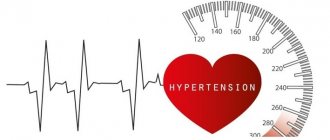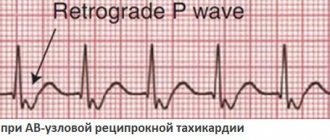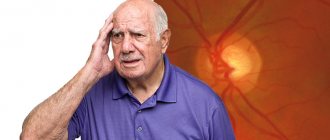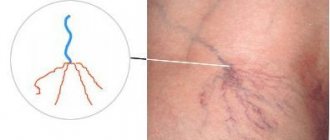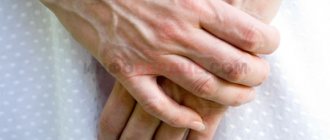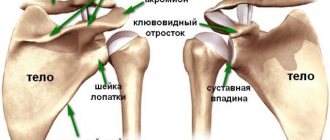This information explains how to relieve shortness of breath.
Sometimes you may find it difficult to breathe and feel like you are out of breath. This condition is called shortness of breath or dyspnea. Shortness of breath may be caused by:
- damage to the lungs due to cancer or its treatment;
- blood clots in the lungs (pulmonary embolism);
- fluid around the heart or lungs;
- pneumonia (pneumonia);
- asthma or emphysema;
- heart damage (chronic heart failure);
- anemia (low levels of red blood cells in the body).
Depending on the cause, shortness of breath may be transient or permanent.
to come back to the beginning
Relief of shortness of breath
The best way to relieve shortness of breath is to treat the cause. But this is not always possible. Your doctor and nurse will work with you to determine the best ways to improve your breathing. Below are other ways to relieve symptoms.
General Tips
- Try using a small hand-held fan to blow air on your face when you feel out of breath. This is a way to provide immediate relief from shortness of breath.
- When carrying out daily activities, limit your activity so as not to cause discomfort. If you are out of breath, stop and rest until your breathing is the same as when you started your activity. After that, get back to what you're doing if you can.
Oxygen
Every cell in your body needs oxygen. If your blood oxygen levels are low, you may experience shortness of breath. Your doctor or nurse can measure the oxygen levels in your blood using a small finger-worn device called an oximeter.
If you don't have enough oxygen in your blood, breathing in extra oxygen can help make you feel better. You can get extra oxygen in two ways:
- Using a hub. A concentrator is a small machine that takes oxygen from the air and delivers it to you through a thin, flexible tube placed under your nose.
- From a portable oxygen cylinder. You can take this cylinder with you anywhere. If the oxygen in the cylinder runs out, it can be refilled. Companies that provide breathing machines or home care services can deliver oxygen to your home if needed.
Medicines
Your doctor may also prescribe medications for shortness of breath, depending on the cause. You may take these medications by inhalation, orally (by mouth), or intravenously (through a vein).
- If you have asthma, emphysema, or chronic bronchitis, your doctor may prescribe a nebulizer or inhaler. Both devices spray the medication into tiny droplets that you inhale. Your nurse will teach you how to use a nebulizer or inhaler.
- If you have a blood clot in your lung, your doctor may prescribe a blood thinner (anticoagulant). This medicine may be taken as a tablet or as an injection (shot). Your doctor will order blood tests and tell you what precautions you need to take while taking these medications.
- If you have pneumonia, your doctor may prescribe antibiotics to treat it.
- If you have too much fluid around your heart or in your lungs, your doctor may prescribe medications such as diuretics (water pills) or diuretic injections to get rid of the fluid.
Other medications that may help make breathing easier include:
- corticosteroids, such as prednisone (Deltasone®) or methylprednisolone (Medrol®);
- pain medications such as morphine sulfate (Avinza® or Kadian®).
Your doctor will discuss with you which of these medications is best for you.
to come back to the beginning
Symptoms of chronic heart failure
Shortness of breath is one of the earliest symptoms of heart failure. In the initial stages of the disease, shortness of breath occurs only during intense physical activity. As the disease progresses, the load threshold decreases. Patients with severe heart failure complain of shortness of breath at rest.
Orthopnea is shortness of breath that occurs when lying down, especially with a low headboard. She disappears into a vertical position. Shortness of breath in heart failure appears after a few minutes of the patient being in a horizontal position. It disappears just as quickly in a standing or sitting position. The cause of orthopnea is an increase in venous blood flow to the heart and overflow of blood into the pulmonary circulation.
Patients with heart failure are bothered by a rapid heartbeat. This is a compensatory mechanism that is aimed at maintaining minute blood volume in conditions of decreasing stroke volume. Patients complain of interruptions in the functioning of the heart, which may be a manifestation of rhythm disturbances observed in patients with heart failure.
Strong palpitations and shortness of breath on exertion are accompanied by a dry, unproductive cough. It appears in a horizontal position of the patient. Cough in heart failure occurs due to congestion in the lungs, swelling of the bronchial mucosa and irritation of cough receptors. Early signs of the development of heart failure are weakness, increased fatigue and heaviness in the lower extremities. These complaints appear due to impaired blood supply to skeletal muscles.
With systolic heart failure, patients experience swelling in the lower extremities. Initially, they are located in the ankles and feet, appear in the evening and disappear in the morning after rest. As heart failure progresses, swelling spreads to the lower legs and thighs. They become more persistent, intensify in the evening and do not disappear after rest.
In the early stages of heart failure, patients develop nocturia, an increase in urine output at night. It is associated with differences in blood flow in the renal arteries in patients with heart failure at rest and during exercise. a significant decrease in daily diuresis (oliguria) - indicates a significant decrease in renal blood flow and cardiac output even at rest. It is characteristic of late stages of heart failure.
Breathing exercises
Your nurse can show you how to take slow, deep breaths to help relieve shortness of breath. You can do them with the diaphragm, the muscle that separates the chest cavity from the abdominal cavity (see Figure 1). This type of breathing is called diaphragmatic breathing.
Figure 1. Aperture
Try to relax while doing breathing exercises. Relieve muscle tension. This will allow the abdominal cavity (belly), chest, and lungs to expand.
Here are some breathing exercises that can help relieve shortness of breath.
Deep breathing 4-8-8
This exercise improves the movement of air in the lungs. This helps increase oxygen levels throughout the body.
- Inhale through your nose, counting to 4.
- Hold your breath and count to 8.
- Exhale through pursed lips (as if you were whistling) for a count of 8.
- Repeat 4 times.
Chest wall stretch
This exercise will help the chest muscles become more elastic.
- Inhale through your nose, counting to 4. As you inhale, extend your arms in front of you and raise them above your head.
- Exhale through pursed lips. As you exhale, open your palms and lower your arms down to your sides.
- Repeat 4 times.
Rapid breathing through the nose
This exercise can help strengthen your diaphragm.
- Shut your mouth.
- Inhale and exhale quickly through your nose for 15 to 30 seconds.
- Practice this exercise several times until you can do it for 60 seconds.
Walking and breathing
These tips will help you breathe easier when walking.
- When walking on a level surface, inhale and exhale through your nose without opening your mouth.
- On inclined surfaces (slopes), inhale through your nose and exhale through pursed lips.
- When climbing stairs, exhale at each step through pursed lips.
Recovery from an attack of shortness of breath (from coughing or exercise)
- Tuck your chin to your chest.
- Take 10 short and sharp exhalations through your mouth. If necessary, take short breaths between them.
- When your neck muscles relax a little, inhale through your nose.
- Exhale 3 times through pursed lips. Inhale between exhalations.
- Inhale through your nose, counting to 4.
- Exhale through your open mouth, counting to 8 and making the sound “ah”.
- Repeat 3 times.
to come back to the beginning
Shortness of breath and lack of air in an adult: emergency assistance
Choking, sudden deterioration in health, dizziness combined with lack of air is a reason for an emergency visit to a doctor, but assistance must be provided before doctors arrive. If the suspected cause of shortness of breath during or without physical activity is oxygen deficiency, you need to ensure rest - find support or put the patient to bed. You will also need:
- remove tight clothes, free your neck and chest;
- ventilate the room;
- reassure the patient.
Relief from anxiety
Shortness of breath can cause feelings of fear. Some people say they feel anxious when they start to feel short of breath. However, anxiety can make breathing even more difficult.
Breathing exercises from this material can help you relax. You may also want to know other ways to help relieve anxiety. Talk to your doctor about any anxiety you have. He may prescribe anti-anxiety medications such as alprazolam (Xanax®) or lorazepam (Ativan®) to help you.
Our Integrative Medicine Service also offers relaxation programs that may be beneficial for you.
to come back to the beginning
Treatment and diagnosis of dyspnea in Kaliningrad
If you are concerned about shortness of breath and are looking for a qualified pulmonologist in Kaliningrad, make an appointment at our pulmonology center. For you:
- only competent, caring specialists;
- a full range of procedures for diagnosing lung diseases;
- comprehensive care for pathologies of the respiratory system: treatment of COPD, treatment of asthma;
- rehabilitation after coronavirus infection;
- comfortable living conditions.
You can make an appointment at our pulmonology center by calling 8 (4012) 971-961.
Why us
- Doctors. We receive specialists of the highest qualification category, holders of academic degrees, with extensive experience in leading Russian clinics.
- Individual approach. The doctor will develop an individual examination and treatment plan for each patient in accordance with the cause of development and clinical picture of the disease.
- Complexity. The therapists at our clinic work in close collaboration with other specialists - cardiologists, hematologists, psychotherapists. This provides effective treatment for shortness of breath of various origins.
- Expert equipment. All studies are carried out using modern equipment and are highly accurate.
- Comfort. All consultations, studies and treatment are carried out within our hospital, which allows our patients to save energy and time.
You can see prices for services
Treatment
Treatment of shortness of breath in older people can begin only after a competent medical examination and the prescription of medications by an appropriate specialist.
To achieve the effect of enhancing the contractile function of the heart, glycosides (digoxin, strophanthin) are prescribed. When excess fluid accumulates in the body, swelling, drugs are prescribed to remove it (furosemide, hydrochlorothiazide). To maintain and restore vascular tone, vasodilators (isoket, apressin, etc.) are needed; they increase blood flow and reduce the load on the heart. To quickly relieve spasms by expanding the lumens of the bronchi, bronchodilators (salbutamol, fenoterol) are used. For inflammatory diseases, antibacterial drugs are prescribed.
In addition to medications for shortness of breath, breathing exercises, fresh air and moderate regular physical activity are mandatory components. A good addition (but not the main remedy) to drug treatment would be the use of folk recipes. For nervous tension, soothing herbal teas are especially helpful, and for edema - diuretic herbal preparations. But remember the main rule: the answer to the question “What to do if an elderly person has severe shortness of breath?” Only a doctor can give! First, you need to contact a therapist who will prescribe the necessary studies and tests. Next, the problem of shortness of breath should be dealt with by a specialist in the field of disease that resulted in the pathology.
Boarding houses of the Longevity network offer elderly people with various diseases accommodation in environmentally friendly areas of Moscow and the Moscow region. Here you can settle for a while (for rest and treatment) or for permanent residence. Good care, daily walks in the fresh air, proper nutrition and medical care - all this will be provided in any establishment of the network.
Which doctors should I contact about shortness of breath?
- If shortness of breath is the main complaint, there are no concomitant diseases or other symptoms, make an appointment with a physician.
- If shortness of breath is accompanied by pain and discomfort in the chest, heart rhythm disturbances, make an appointment with a cardiologist.
- Deterioration in external respiratory function may occur due to an exacerbation of your chronic disease (lung disease, heart disease, thyroid disease, bronchial asthma, allergies, autoimmune disease, blood disease, cancer, etc.). In this case, you need to contact a specialized specialist: pulmonologist, cardiologist, endocrinologist, allergist, immunologist, hematologist, oncologist.
Author:
Amelicheva Alena Aleksandrovna medical editor
Self-diagnosis problems
Difficulty breathing, for example, during nasal congestion and when the functioning of the lungs is impaired, are completely different things. It is impossible to figure out the cause of shortness of breath on your own.
treatment of shortness of breath due to coronavirus
You should seek medical help from your family doctor or pulmonologist. You should not self-medicate.
How to assess lung function after coronavirus?
A breath test should be performed. You can do it yourself at home:
- take a deep breath through your nose,
- hold your breath for ten seconds,
- exhale slowly.
In the absence of any discomfort, cough or sore throat, the lungs are healthy. If your health worsens and these symptoms occur, you should immediately seek medical help. You can find a video on the forum on how to properly do a lung assessment.




